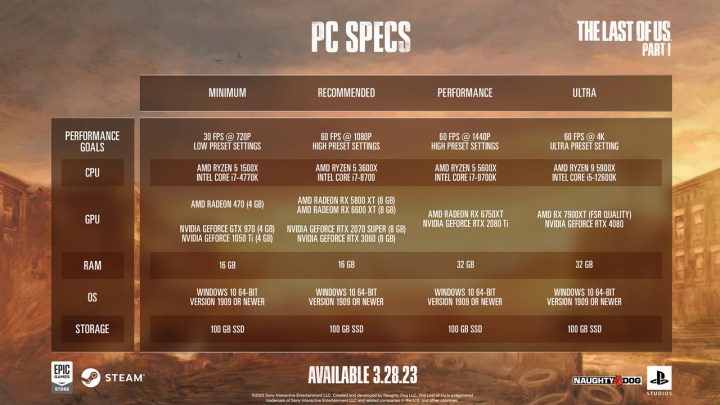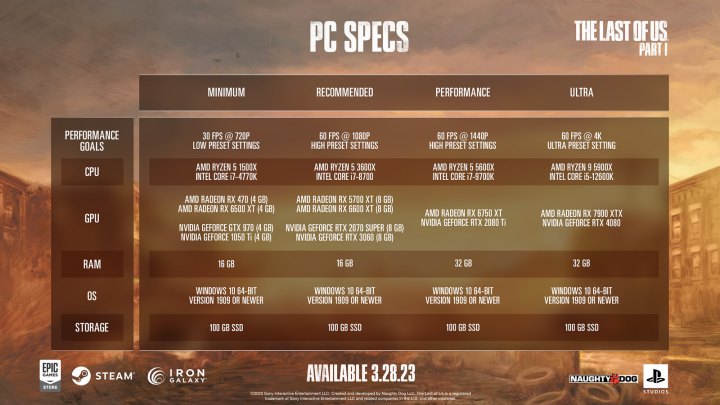Sony Interactive Entertainment (SIE) released an updated PC requirement chart for The Last of Us Part One on Monday, clarifying the system requirements players will need if they want to play the game when it launches on March 28. Some reports claim that the PC requirements have been downgraded, but they haven’t; if anything, the port calls for a slightly more powerful system.
The original PC requirements (below) called for a Radeon RX 5800 XT at the Recommended tier, which is to run the game at 1080p with 60 frames per second (fps). The updated requirements call for an RX 5700 XT instead. That sounds like a downgrade, but AMD never released an RX 5800 XT — it was a typo. You don’t need to look further than the next GPU recommendation to see that, which is an AMD “Radeom” RX 6600 XT. The updated requirements have fixed that typo, as well.

There are some changes in the new PC spec sheet, though. Most notably, the game’s Ultra recommendation calls for an AMD RX 7900 XTX instead of the RX 7900 XT it previously called for. It’s an interesting change, especially now that AMD is offering The Last of Us Part One for free along with the purchase of a new AMD graphics card.
Another update is the Iron Galaxy logo. Previously, it wasn’t clear who was handling the PC port of The Last of Us, but the updated spec sheet clarifies that Iron Galaxy is the studio behind it. That’s the studio that ported Uncharted Legacy of Thieves collection to PC, which was one of the more stable PC releases we’ve seen in the past couple of years.

Everything else is identical in the spec sheet; the update mainly is there to fix some typos and give a nod to AMD’s flagship graphics card. Even without major changes, the good news is that you don’t need a beefy rig to run The Last of Us Part One. At a minimum, you can get by with an Intel Core i7-47700K and Nvidia GTX 1050 Ti
The more interesting requirement is RAM. The game calls for 16GB at minimum, with the Ultra and Performance tiers jumping up to 32GB. This is a similar path that Returnal and Hogwarts Legacy went down, neither of which really needed 32GB of RAM. That could be the case here, where the developers are asking for more than what’s needed.
Editors' Recommendations
- As a lifelong PC gamer, these are the apps I couldn’t live without
- Why you shouldn’t buy the best GPU of last year
- AMD’s new Ryzen 8040 CPUs aren’t all that new
- The best PC gaming hardware of 2023: GPUs, CPUs, monitors, and more
- Graphics terms every PC gamer should know





